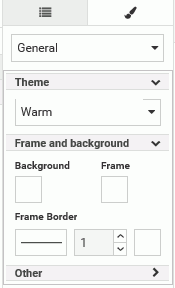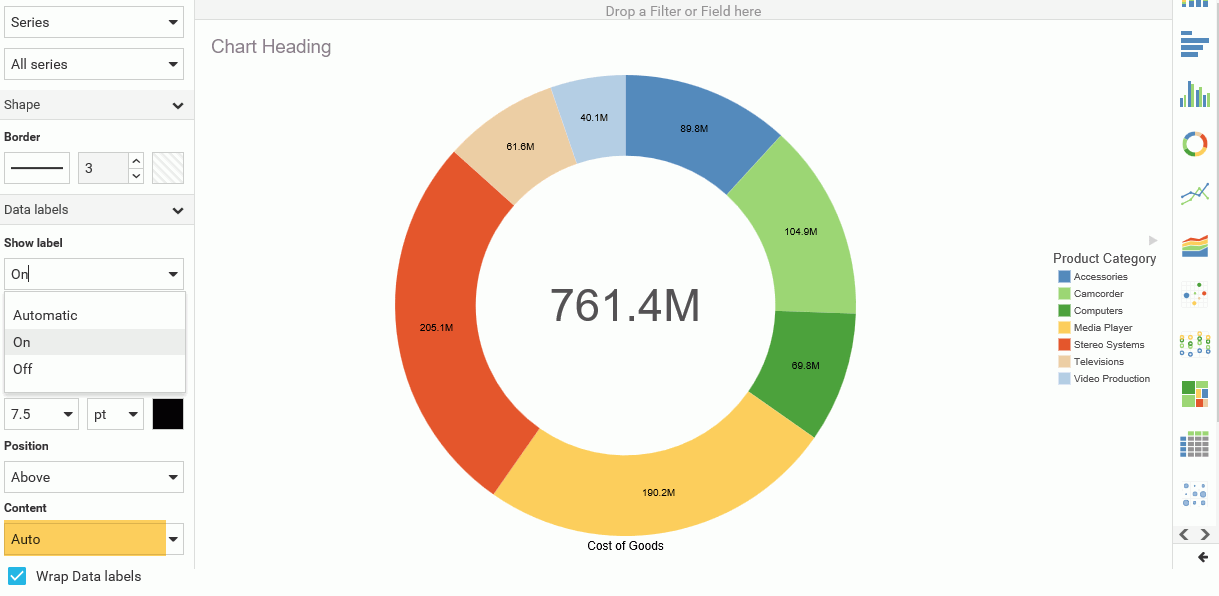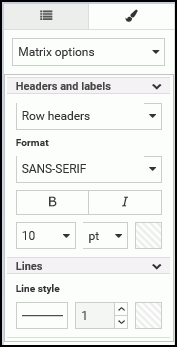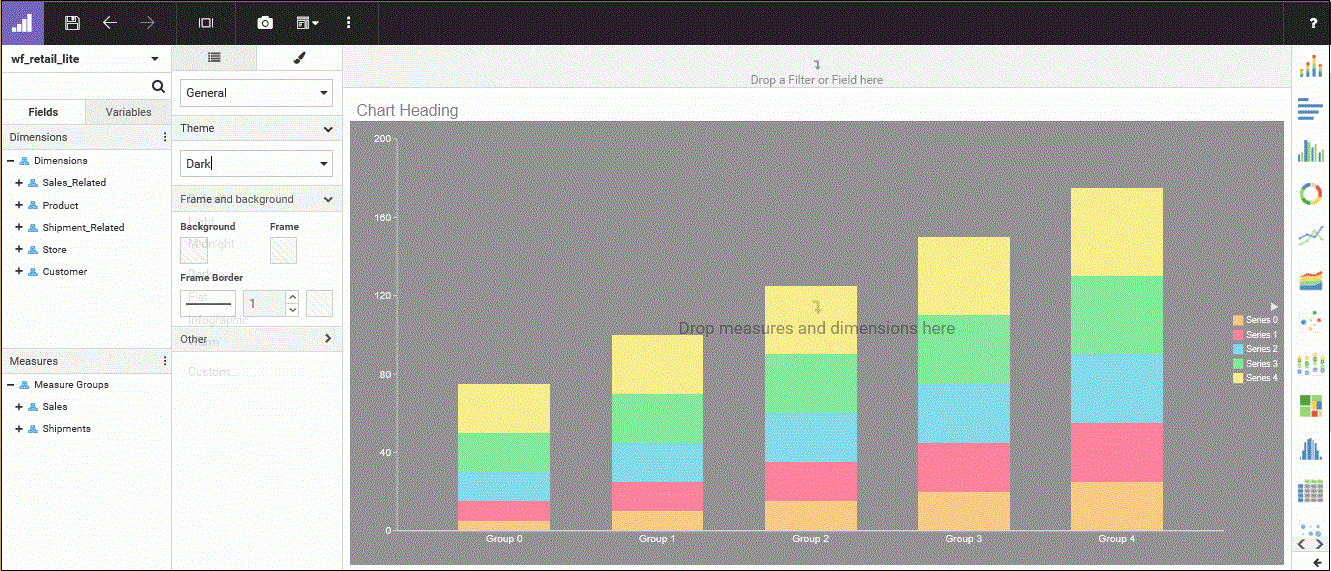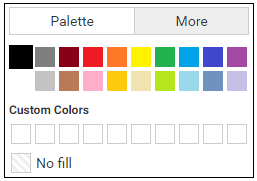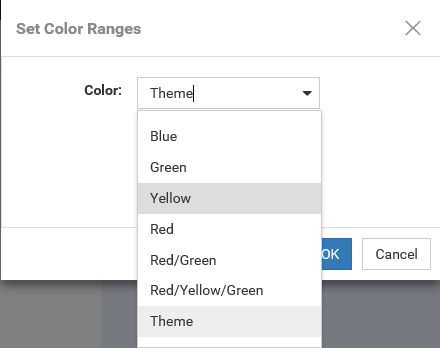By adding color to your chart components, you can change the way information is perceived and plays a large role in the effectiveness
of your chart.
Color adds contrast to your charts, giving you an advantage in presenting unique, well-balanced content. You can use color
to highlight a specific aspect or outcome on your chart. WebFOCUS Designer provides a color picker to add color and style
your chart.
You can access the color picker in two primary ways: on the Style tab and at the top of the canvas when formatting headers
and footers. Using these options, you can style with color and make other color-based decisions. You can indicate color values
and ranges to highlight data. You can color a chart component (for example, a header or axis), text, or even add colored lines
to accentuate the background grid of your data. You can also change the theme, which changes the color palette and background
of your chart.
The following image shows an example of color options that display on the Style tab (with the palette exposed), which you
will also see in other areas where color formatting is supported:
The following image shows the options that display at the top of the canvas (with the palette exposed) when working with headers
and footers.
Note: When specifying a theme, you can use the default or specify another one. The colors stored for the theme are part of the
underlying .css or .sty file, which contains the color schemes.
In WebFOCUS Designer, the color picker supports a colorspace and a palette-based approach, as shown in the following image.
You can access the color picker from any of the sections on the Style tab. You can also access the color picker when working
with headers and footers. When you access the color picker, the color picker displays the Palette tab, by default. From this
tab, you can select from up to 20 pre-defined color options. You can also select the No Fill option, which displays the selected content as transparent. This is particularly useful in cases where you might want to
prevent (or hide) the display of information.
The More tab allows you to choose a custom color by interacting with a hue wheel and the color value field, as shown in the
following image.
You can specify an exact color code (hexadecimal or HTML) by entering it in the color value field located at the top of this
tab, and also specify transparency by using the transparency slider.
Note: When a custom color is selected and you click OK, the color is automatically added to the Custom Colors section in the Palette tab.
You can also set a color range for a measure in your chart. This allows you to specify hues or ranges of color for use in
your chart. In cases where Theme is not selected, the color specification overrides what is available in the theme. The color
that you select dictates the legend, which in turn displays the various chart components, based on the colors and measurements
specified.
To change the color scale options, right-click a measure in the
Color bucket and select
Set color ranges, as shown in the following image.
This invokes a new dialog box, Set Color Ranges, where you can select a color range for your chart, as shown in the following
image.
When you make a selection, you can override the color schemes that
are available from the theme of your chart. Theme is selected, by
default. You can select a different color range, such as Green or
Red/Orange, from the list of options, which gives you more control
over how color is used in your chart to create contrasts between
various aspects. For example, if your chart displays different
temperature values using a measure in the Color bucket, you may
wish to use the Red/White/Blue option to intuitively show higher
temperature values in red and lower ones in blue
If you change the color range to something other than Theme, it is
written as inline styling in the .fex file. Inline styling always
overrides what is in the StyleSheet because it is listed after it
in the .fex file. In this case, the last setting indicates which
styling takes precedence. When the color range is set back to
Theme, the inline styling is removed so the behavior returns to the
theme's settings.
This behavior does not affect your ability to change themes on the
Style tab. However, if you change the theme with an inline setting
in place, the settings of the Theme will still be overridden by the
inline settings and the color scale in the legend will not be
affected. The current procedure only respects the current theme's
settings if the color range setting is set to Theme.
In the Set Color Ranges dialog box, you can also select
Continuous or Discrete to determine how the color scale is generated. When Continuous is
selected, the color scale is a gradient, and each color in the
color scale represents a different value. When Discrete is
selected, the color scale is divided into segments. Each color in
the color scale represents a range of values.
The following image shows a matrix marker chart that uses the
Red/Yellow/Green color scale with the Continuous option selected.
The Continuous option creates a more granular color scale, allowing
you to see slight differences between similarly colored chart
components.
The following image shows the same chart, with the Discrete option
selected.
The Discrete option creates identifiable groups based on sections
of the color scale.
When using the Theme color scale option, the default color scale
type and number of segments in discrete mode are dependent on the
values of the colorScale property in the theme that you are using.
For example, if 5 colors are listed for the colorScale property in
StyleSheet being used as your theme, then 5 colors display in the
color scale when the discrete option is used.

